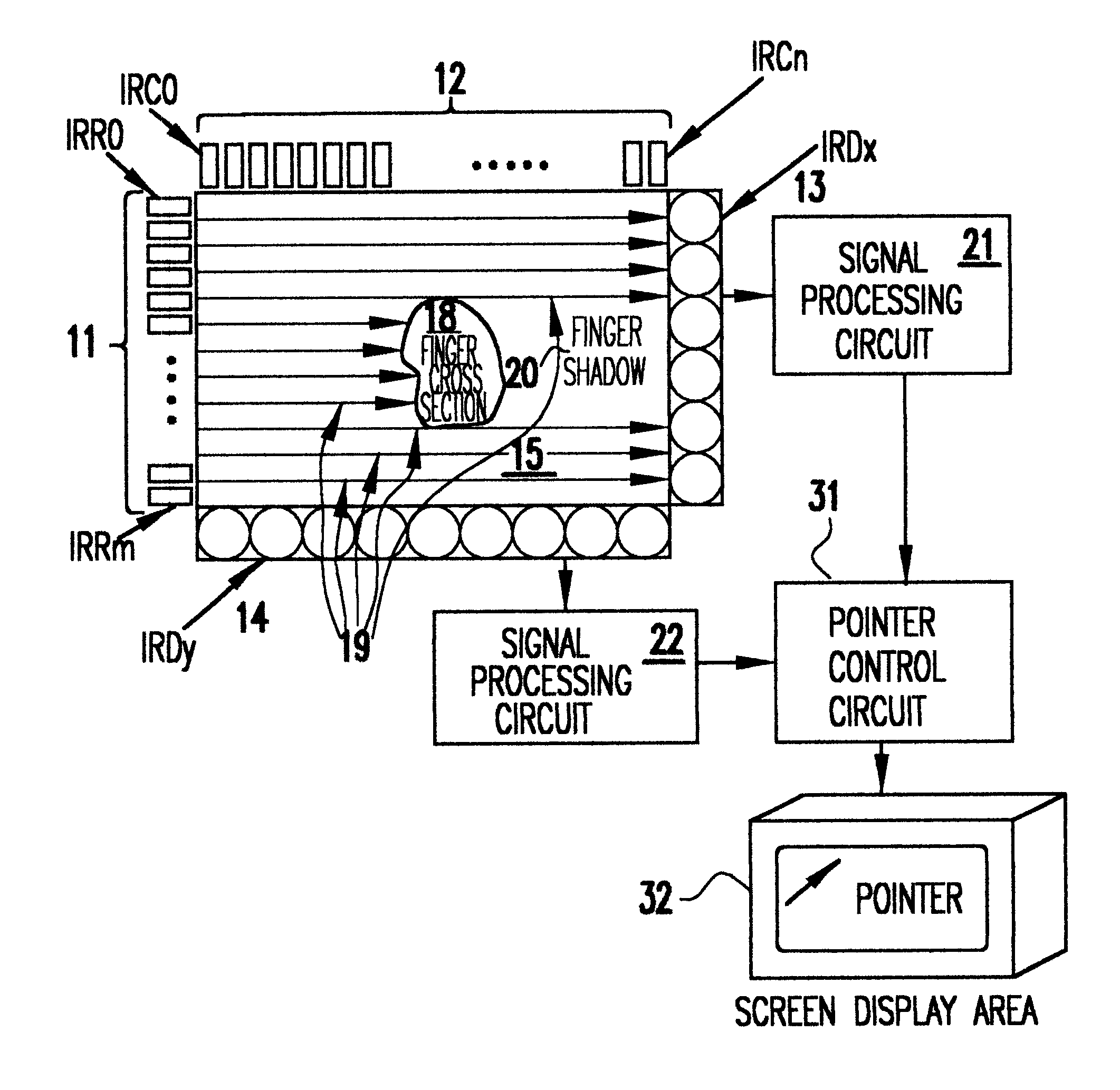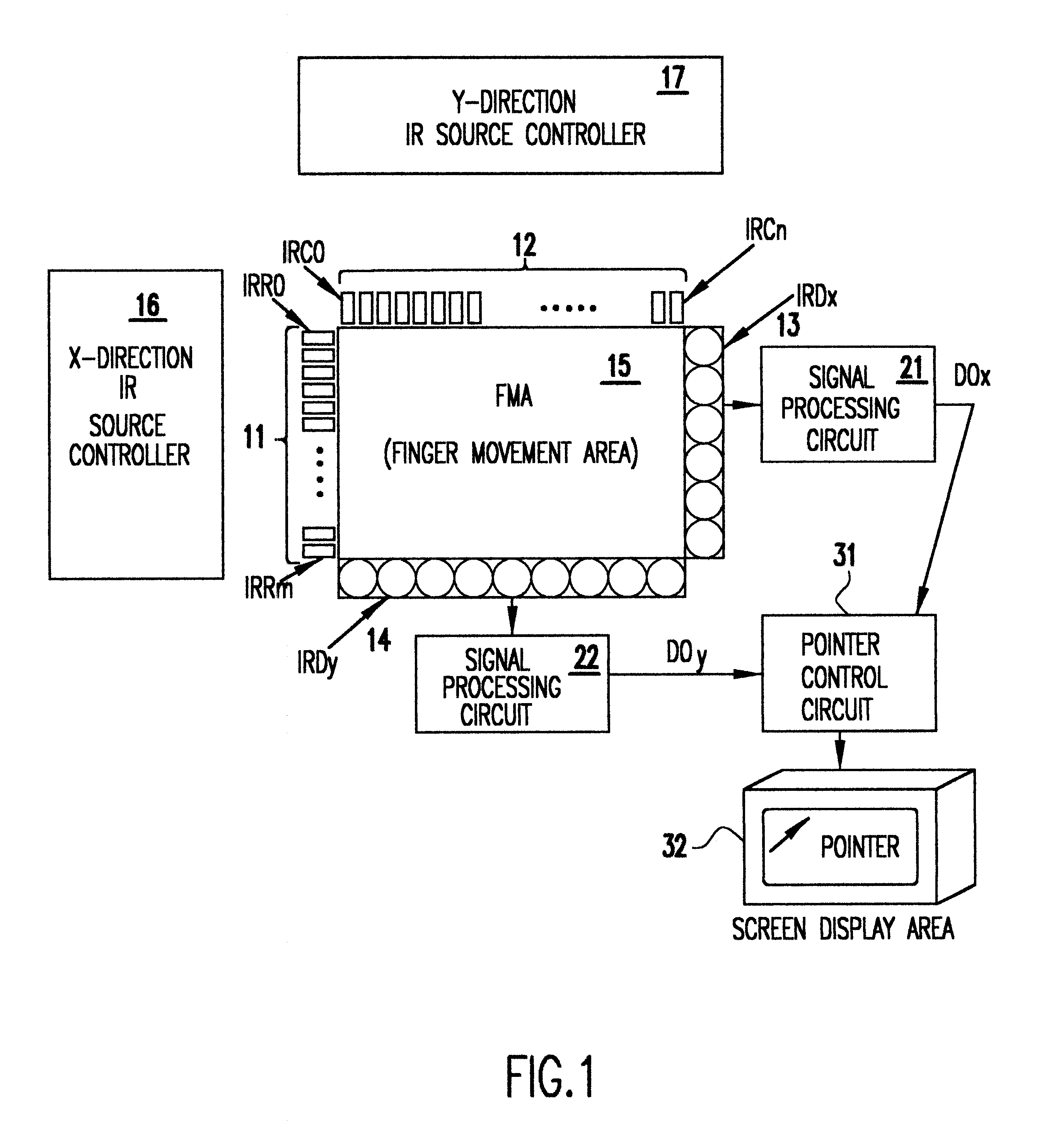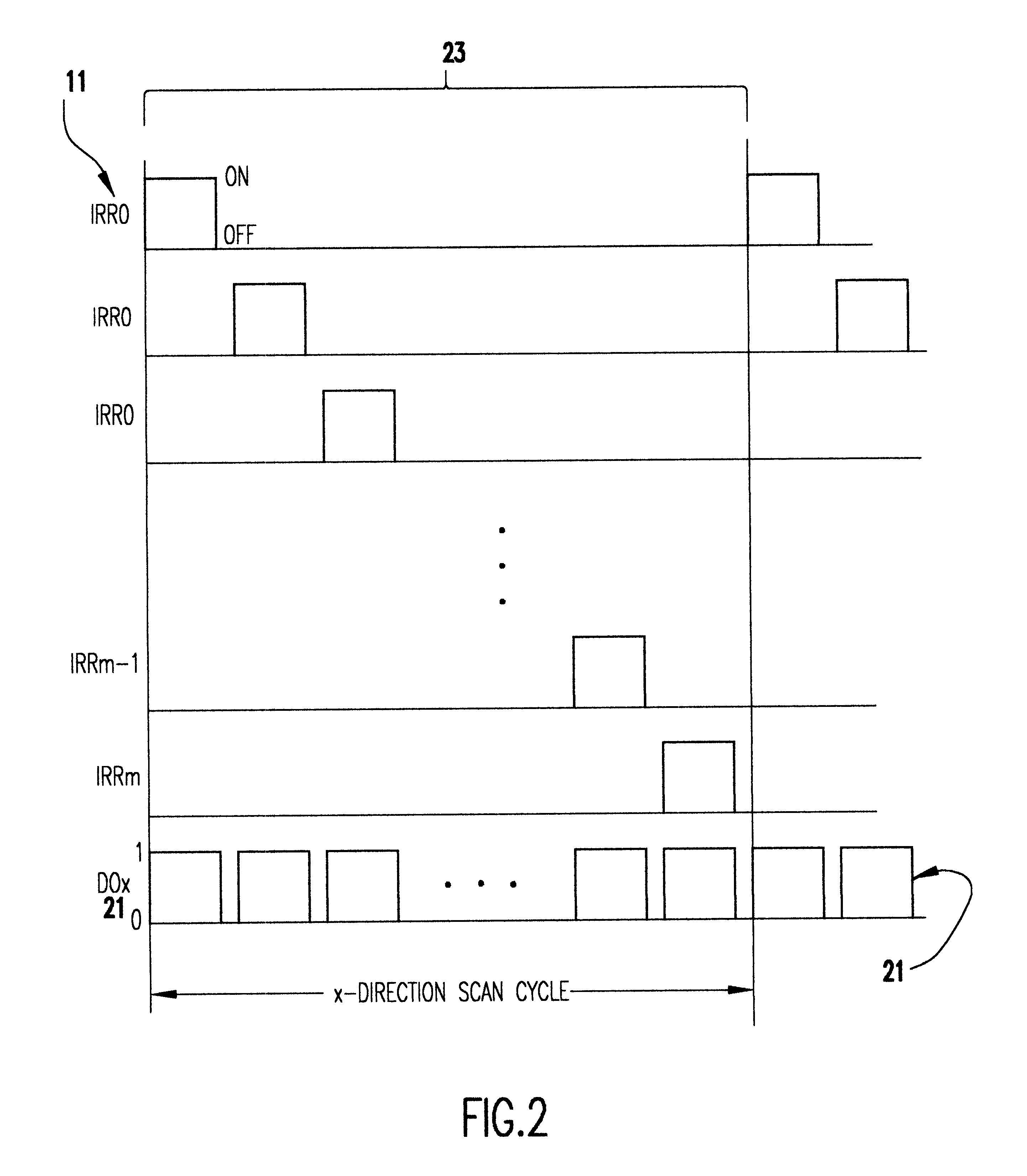Method and apparatus for mouse positioning device based on infrared light sources and detectors
a positioning device and infrared light technology, applied in the field of pointer positioning devices, can solve the problems of poor user dexterity, low reliability, wear and tear during use,
- Summary
- Abstract
- Description
- Claims
- Application Information
AI Technical Summary
Benefits of technology
Problems solved by technology
Method used
Image
Examples
Embodiment Construction
Referring now to the drawings, and more particularly to FIG. 1, there is shown a schematic diagram of the new pointing device. Here, infrared (IR) light sources 11 labeled IRC0-IRCm (IR rows 0 to m) and infrared light sources 12 labeled IRC0-IRCn (IR columns 0 to n) produce collimated beams of IR light in each of the x and y directions, respectively. Each of these sources can be activated separately and independently, preferably in a sequential scanning pattern. The IR light emitted by any of the IR sources 11 or 12 can be detected by the IR detectors 13 and 14 (IRDx and IRDy) placed at respective opposite sides to IR sources 11 and 12 of the rectangular Finger Movement Area (FMA) 15.
During operation, the FMA 15 is continuously scanned by IR light in both x and y directions from the IR lights sources 11 and 12. The x-direction IR source controller 16 sequentially activates the IR sources 11, while the y-direction IR source controller 17 sequentially activates IR sources 12. Although...
PUM
 Login to View More
Login to View More Abstract
Description
Claims
Application Information
 Login to View More
Login to View More - R&D
- Intellectual Property
- Life Sciences
- Materials
- Tech Scout
- Unparalleled Data Quality
- Higher Quality Content
- 60% Fewer Hallucinations
Browse by: Latest US Patents, China's latest patents, Technical Efficacy Thesaurus, Application Domain, Technology Topic, Popular Technical Reports.
© 2025 PatSnap. All rights reserved.Legal|Privacy policy|Modern Slavery Act Transparency Statement|Sitemap|About US| Contact US: help@patsnap.com



